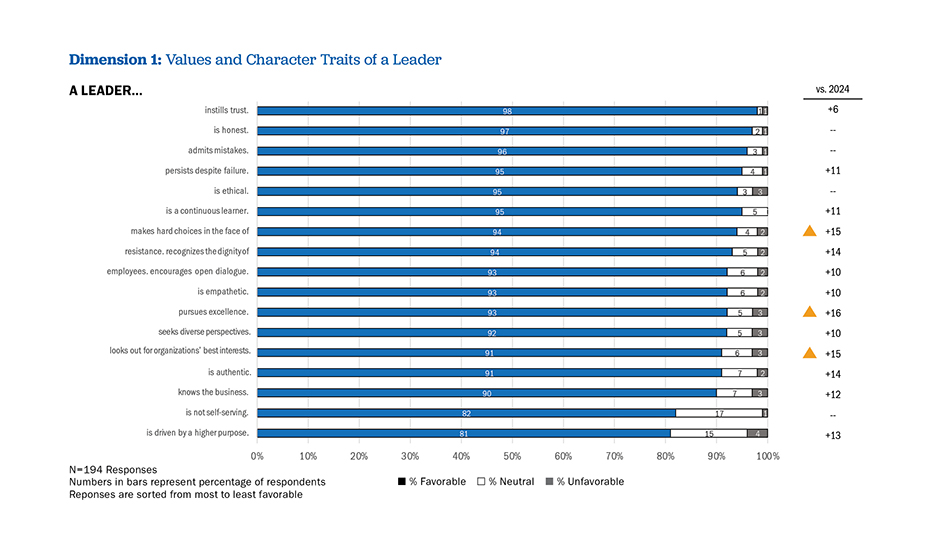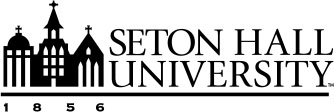
The Trust Imperative: Next Generation Evidence for Leadership Effectiveness
Thursday, September 11, 2025
Key findings of the 2025 Future of Leadership Survey
Does the generation now entering the workforce — commonly referred to as Gen Z — perceive organizational trust differently from previous cohorts, and do the dimensions developed over 30 years ago still matter? How much time elapses before employees feel they can trust a leader, or conversely, lose that trust? The 2025 edition of the Future of Leadership Survey focuses on answering these important questions.
Is trust the missing link in your leadership? In a time of unprecedented generational transition and organizational uncertainty, trust has emerged as a critical foundation of effective leadership. As Gen Z increasingly joins the workforce, early evidence suggests that their expectations of leaders differ from the past cohorts1. While leadership literature has evolved from an emphasis on traits and behaviors to contingency styles of leadership, recent discourse has shifted to a more urgent determinant of leadership impact measured by the presence or absence of trust.
Background
The research of Meyer, Davis, and Schoorman (1995)2 first posited the three essential components to build trust in organizations:
- Ability: The technical, human and conceptual skills to do the job as it is today and tomorrow.
- Integrity: The adherence to a set of principles or values that employees find acceptable.
- Benevolence: The belief that leaders in organizations will act consistently in employees’ best interests and are not self-serving; they act to serve others and not their self-interest.
Additionally, Colquitt, Scott, and LePine (2007) found that trust, trustworthiness and trust propensity each uniquely influence risk-taking and job performance, highlighting their distinct roles in workplace behavior.3
Key Findings
Based on the recently concluded stage of our five year longitudinal study, we report that the 1995 tri-part model on trust is still compelling for Gen Z, affirming that older framework.
When we asked our respondents what instills trust or leads to loss of trust in their immediate leader, the qualities of ability, integrity and benevolence still emerged as the dominant levers for both earning and losing trust, with ability being the No. 1 indicator in each case. We measured the dimensions of ability, integrity, and benevolence using a five-point scale, with five being most important. Here are the respective means, denoted as “M.”

For building trust, ability (M=4.56) is rated higher than integrity (M=4.39) and benevolence (M=4.25). For losing trust, ability (M=2.87) outranks integrity (M=2.53) and benevolence (M=2.38).
Furthermore, we learned that leaders have about one year to establish themselves as trustworthy or to be perceived as untrustworthy. Earning trust usually takes longer: The median time to build trust is 13–24 months. Losing trust is significantly faster: The median is within 12 months, with 44.1 percent reporting loss in ≤6 months and 69.6 percent in ≤12 months.
In this sample, trust is lost significantly faster than it’s earned. Statedly differently, subordinates seem to eye the overall actions of their superiors very carefully in year one or so, seeking cues and clues on their leaders’ ability to do the job, their integrity and their benevolence.
As subordinates process these cues and clues, we also saw a divergence of which of the three dimensions was most important. Across respondents, building trust is anchored in integrity and ability: Transparency and openness score high and align with integrity-based trust, but skills and competencies lead the pack; attracting, developing and retaining talent also matters.
But, when trust is lost, benevolence and integrity become more important. Ratings on self-serving and violating principles are significantly worse than competence within the same people and track tightly with loss facets.
Essentially, leaders build trust through openness and capability (plus talent building) but lose it through self-interest and compromised principles.
Our research also unearthed the organizational benefits of building trust. The 2025 survey shows that trust is a statistically significant indicator of leadership effectiveness (r=.212). It also found trust to be correlated to job satisfaction (r=.274), retention (r=.140) and future leadership ability (r=.173). Employees reported high job satisfaction where they trust their leaders, and they are more likely to remain in the organization and believe that their own leadership development is more likely. Leaders who inspire trust bring tangible and positive organizational outcomes.
For the 2025 edition of the survey, we undertook a measured research strategy. This year’s 227 survey respondents were primarily Seton Hall University students (56 percent female; 71 percent white or Hispanic; mean age 23 years old). Even with this smaller survey size and population, several findings from our prior work matched findings from this year. For example, trust emerged as the most significant predictor of leadership effectiveness in our 2024 survey with 4,203 respondents. Further, looking at year over year, data results are consistent for value and character traits and competencies, giving us confidence in generalizability of our data, as depicted below.

Based on the similar findings over time, we believe that our work on trust, while preliminary, is robust enough to provide immediate courses of action for today’s organizations and executives:
- To build trust, today’s organizations have to be absolutely determined to hire for ability. Job responsibilities have to be clear, along with accompanying experiences that demonstrate job aptitude.
- Probing into the integrity of candidates will help ensure congruency between the candidate’s own integrity and those same sets of values in the organization.
- Candidates should be able to demonstrate how they have acted with benevolence in prior positions. Firms should consider obtaining reference checks from former subordinates or clients to try to determine a candidate’s propensity to be benevolent.
Aside from this screening when hiring, organizations should support new employees and established employees in new positions in their first year to prevent the risk of failure rooted in integrity and benevolence. Organizations should also undertake a trust inventory with existing managers. Is the organizational culture one that will nurture and support trust?
This also provides a compass for today’s executives and employees to develop their own career trajectories by embracing the three dimensions of trust in their self-development: ability, integrity and benevolence. These elements should be evaluated constantly, even if informally.
Future Research
The next phase of our research will expand our population of respondents. We will seek to determine whether the length of time in employment tempers their discernment on when trust is earned or lost. We also hope to identify the critical incidents that caused trust to be lost, deepening our understanding of the sub-components of ability, integrity and benevolence.
For now, though, developing leaders will want to do a mental checklist of where they stand on their own spectrum of ability, integrity and benevolence, thereby advancing trust in their own organizations.
1 The Future of Leadership Survey (Kansal et al., 2021/2025), https://ruchinkansal.com/ the-future-of-leadership/
2 Mayer, R. C., Davis, J. H., & Schoorman, F. D. (1995). An Integrative Model of Organizational
Trust. Academy of Management Review, 20(3), 709–734.
3 Colquitt, J. A., Scott, B. A., & LePine, J. A. (2007). Trust, Trustworthiness, and
Trust Propensity: A Meta-Analytic Test of Their Unique Relationships with Risk Taking
and Job Performance. Journal of Applied Psychology, 92(4), 909–927.
4 For quantitative details of findings, please consult the authors.
In the Lead magazine is a collaboration between the Buccino Leadership Institute and the Stillman School of Business’s Department of Management. This edition reaffirms Seton Hall’s commitment to fostering innovative, ethical and impactful leadership. Stay ahead of the curve — explore the Fall 2025 issue of In the Lead.
Categories: Business

